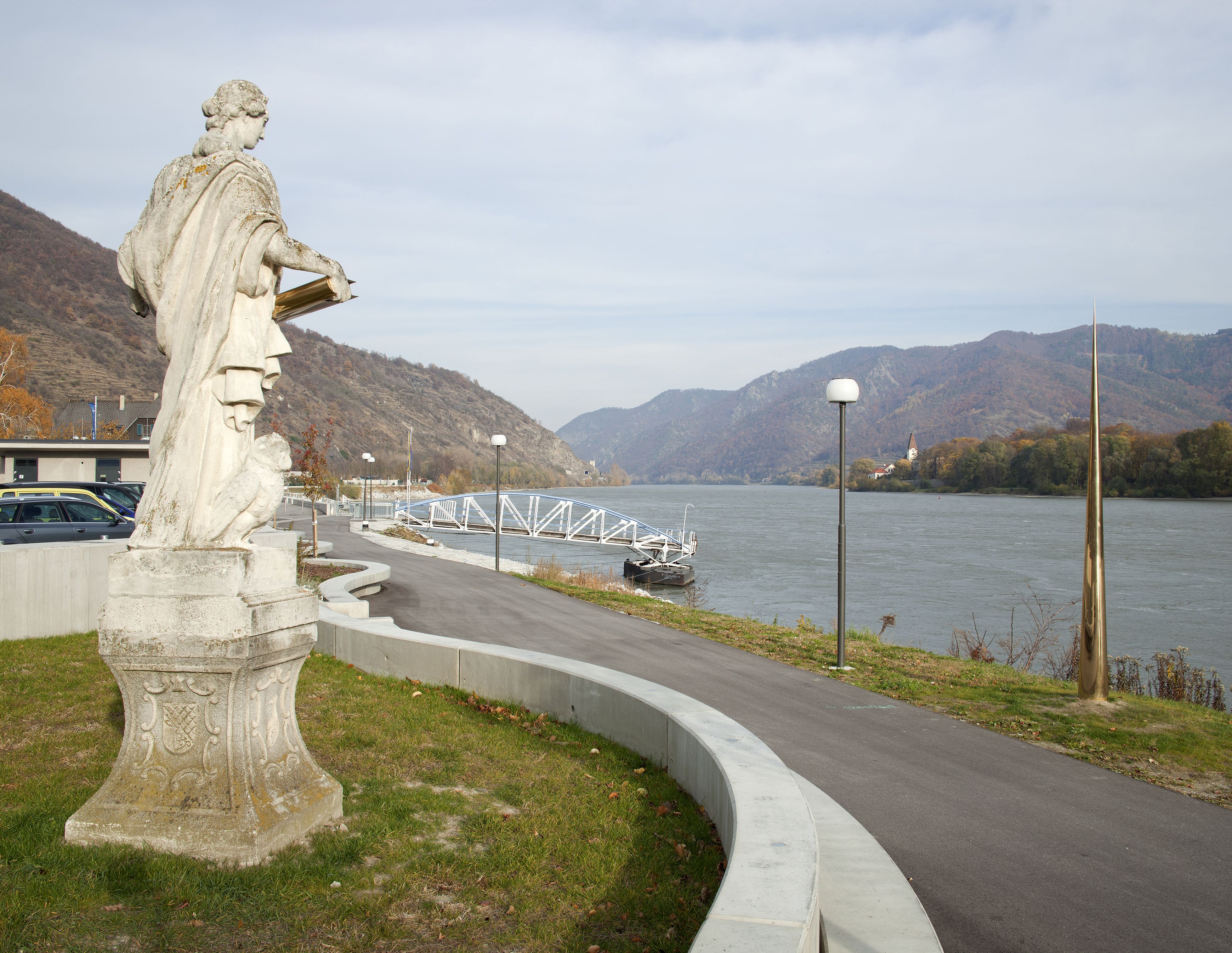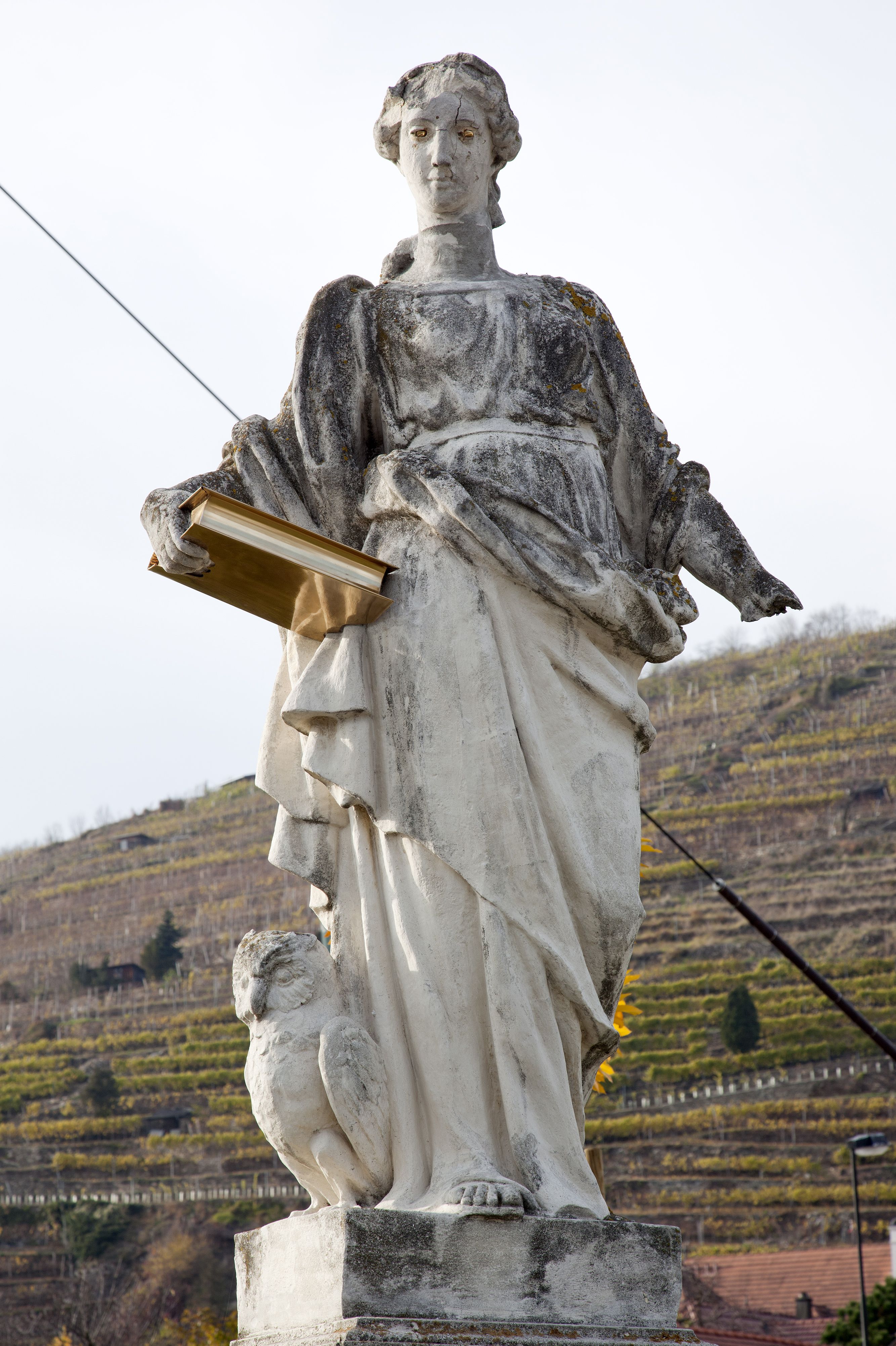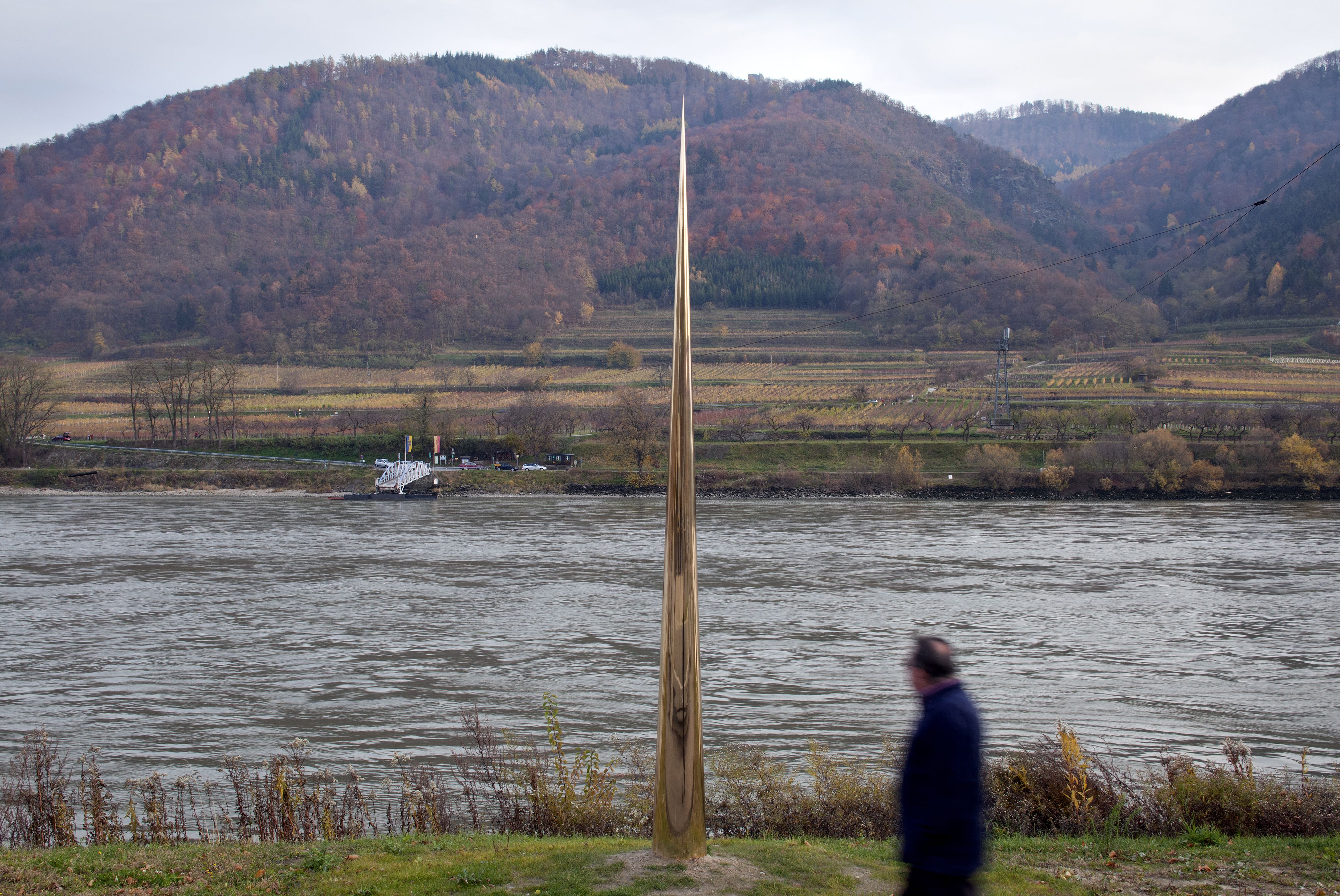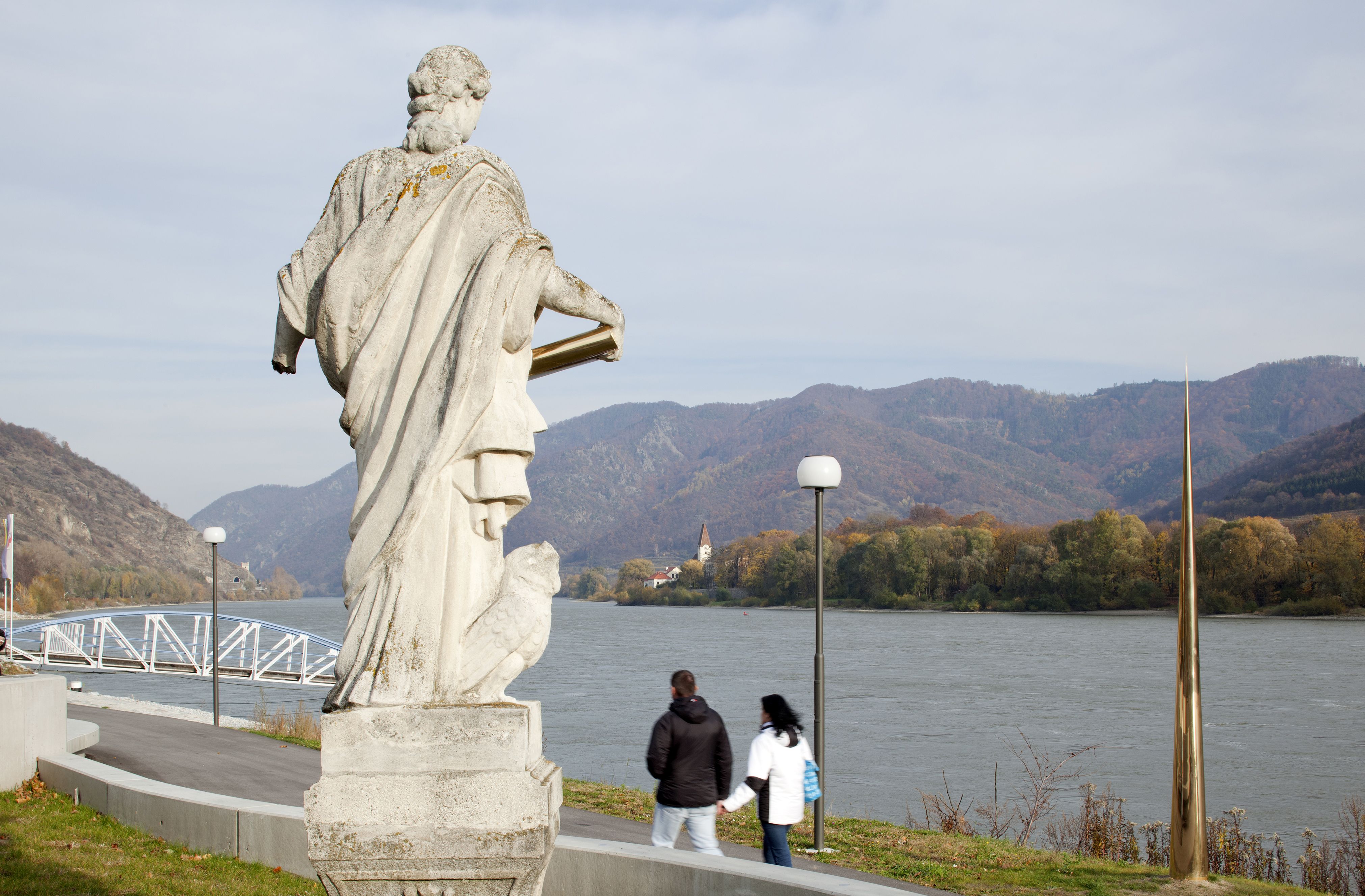Gottfried Bechtold
:
Spitz
Back
Information
Analysis, experimentation, intervention – these are the three concepts on which Gottfried Bechtold’s artistic work is based. He describes his method as "the attempt to create a new configuration between materiality and information in the form of a new alloy." Bechtold’s public art installations are the result of the close observation and evaluation of site-specific conditions and of the desire to create new site-specific contexts. For his project in Spitz – a multi-part sculpture located along the "Donaulände" (Danube embankment) – the artist chose again to refer to a site and its history. The work consists of a delicate cone structure made of bronze that is 4.45 meters tall, placed on the embankment of the Danube as a reminder of the river’s historic flood level. The old wine-growing village of Spitz in the Wachau region is nestled against the Danube amidst terraced vineyards. The late Gothic church and the Renaissance and Baroque houses bear witness to the centuries of wealth that the Danube has brought to the people of this region. At the same time, this force of nature could also take everything away again. In his works for public space, Gottfried Bechtold places a special focus on the relationship between civilization and nature. In this context, the cone could be regarded as a metaphor hinting at how we treat nature, evoking associations with measuring instruments, markers in the landscape, or a stylized, larger-than-life blade of grass.
Although the term "cone" may be correct in a geometric sense, the sculpture rather reminds us of a calligraphic brush stroke, or a needle that tapers off to a point (a form which Bechtold has used often). Without its surroundings, the object has no story to tell. It is minimalistic and thus self-referential. By interacting with its environment, it becomes charged with information beyond materiality and form. Using this dualism as a basis, Gottfried Bechtold gave the cone a counterpart in the form of a stone Athena statue, looking at it from the other side of the towpath. She tells her own story as the goddess of wisdom and tactical warfare; the patron goddess of poets, philosophers, artists, and craftsmen; and the guardian of knowledge. The artist has made a double intervention here: He took this nineteenth-century sculpture – a gift to the community that has been standing here for many years – and turned it, so that Athena is facing the cone. He redirected her gaze and highlighted her eyes and the book in her hand by coating them in bronze. As a result, the installation reveals many layers of meaning. Bechtold positioned the cone subtly, but unmistakably, in relation to the historical sculpture, thus creating a kind of dialogue between the present and past. Through this confrontation, the space between the artefacts becomes part of the installation in the form of an immaterial sculpture, while time becomes accessible through space. At the same time, he reformulates the question of whether artworks refer only to themselves, or if they also refer to the world around them. By joining iconic and narrative thought in one of his “new alloys,” Bechtold seems to offer a refreshing solution for everyone still under the spell of dialectics – that both can be the case at the same time.
Gottfried Bechtold, whose career has transgressed all genres since the end of the 1960s, is one of the few early Austrian conceptual artists. Internationally, he has also made a significant contribution to pushing the envelope of the notion of sculpture. Already in 1972, he realized the work 100 Tage Anwesenheit in Kassel (100 Days on Location in Kassel), in which the artist appeared at different public places in Kassel for the entire duration of documenta 5, thus declaring the immaterial performance and the act itself a sculpture. In his more recent works, Bechtold continues to explore the limits of artistic action in a seemingly effortless manner, sometimes even referring to older works. His drawing Von Spitz bis Stumpf (From Pointy to Blunt) from 1972 comes to mind (because of the “Spitz” association). It is an unbroken, curved pencil line that crosses the sheet of paper from left to right, increasing in thickness as it progresses toward the lower edge: a perfect example of just how essential wordplay is in Bechtold’s work. Gottfried Bechtold makes real history visible with his installation in the Wachau region, but through his intervention, he also invents a fictive history in which he plays with location and language in an allusion to the future. The town of Spitz thus gets a “point” (Spitz), while we are reminded in an ironic, even a self-ironic, twist that historiography is always a construction that depends on personal and contemporary views.
(Cornelia Offergeld)





